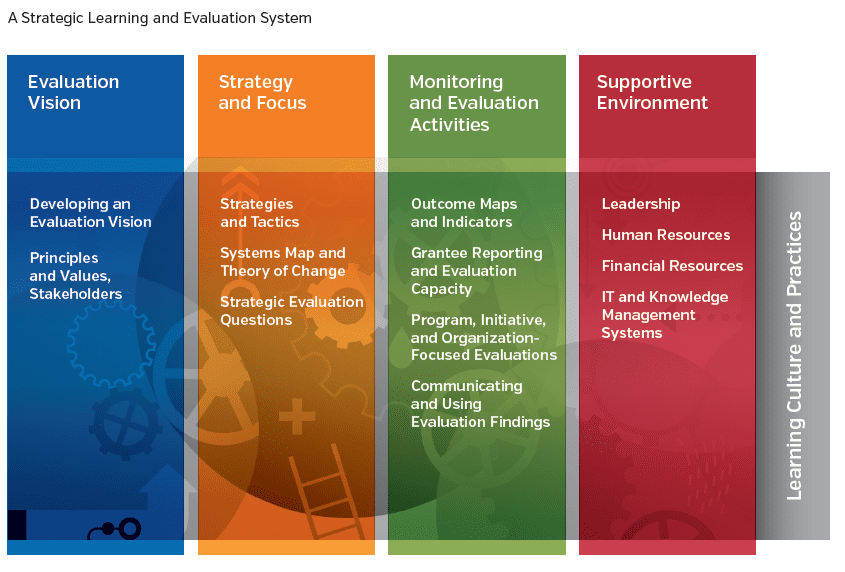Show me an organization with a complex, multi-pronged social impact strategy and I will show you an organization that could use a strategic learning and evaluation system.
In general, organizations can be grouped into two distinct categories: those that engage in an abundance of activities to learn from or evaluate their efforts and those that engage in few or none. Thankfully, the latter group is shrinking, as nonprofits and foundations embrace “outcomes-oriented” philanthropy and engage in “continuous learning.”
Organizations trying to solve complex problems, seeking to advance systems change, or pursuing a set of “comprehensive” strategies are most likely to employ evaluation activities to assess grantees’ performance, evaluate internal processes, identify outcomes of specific programs or initiatives, and the list goes on.
While I fully support and laud the increasing investment that is taking place, I’ve noticed an unexpected consequence. There seems to be an uptick in evaluations that are disconnected from strategic or programmatic decisions and only loosely aligned with the interests or needs of top leadership. Evaluations are being commissioned by anyone (and sometimes everyone) within an organization, without structure, strategic vision, or coordination.
To me this reflects a scattershot strategy of doing evaluation, and creates a disconnect between strategy, evaluation, and learning. This disconnection, coupled with an increasing number of evaluation-related activities, results in redundancy and inefficiency. Ultimately, it could lead to disillusionment about the role or usefulness of evaluation within the sector.
In order to combat the disconnect between strategy, evaluation, and learning, FSG has developed a framework to ensure a comprehensive strategy for evaluation within an organization. We call this a Strategic Learning and Evaluation System, or SLES – for short. A SLES connects the dots between evaluation and learning activities that might already be underway, making sure that evaluation findings and recommendations can inform strategic decisions. This can happen at an organization-wide level or within specific program areas or departments.
The framework is the subject of FSG’s latest field-building report – Developing a Strategic Learning and Evaluation System for your Organization – which was released earlier this week. Using real-world examples, the report describes the key components an SLES uses to ensure evaluation activities are integrated and aligned with organizational strategies. They include:
- A clear vision for evaluation;
- Agreed upon strategy and focus;
- A portfolio of monitoring, evaluation, and learning activities; and
- Supportive environment.
When these components are in place and work together, they elevate the relevance and potential impact of evaluation within an organization.
Stay tuned for more information on Strategic Learning and Evaluation Systems.

